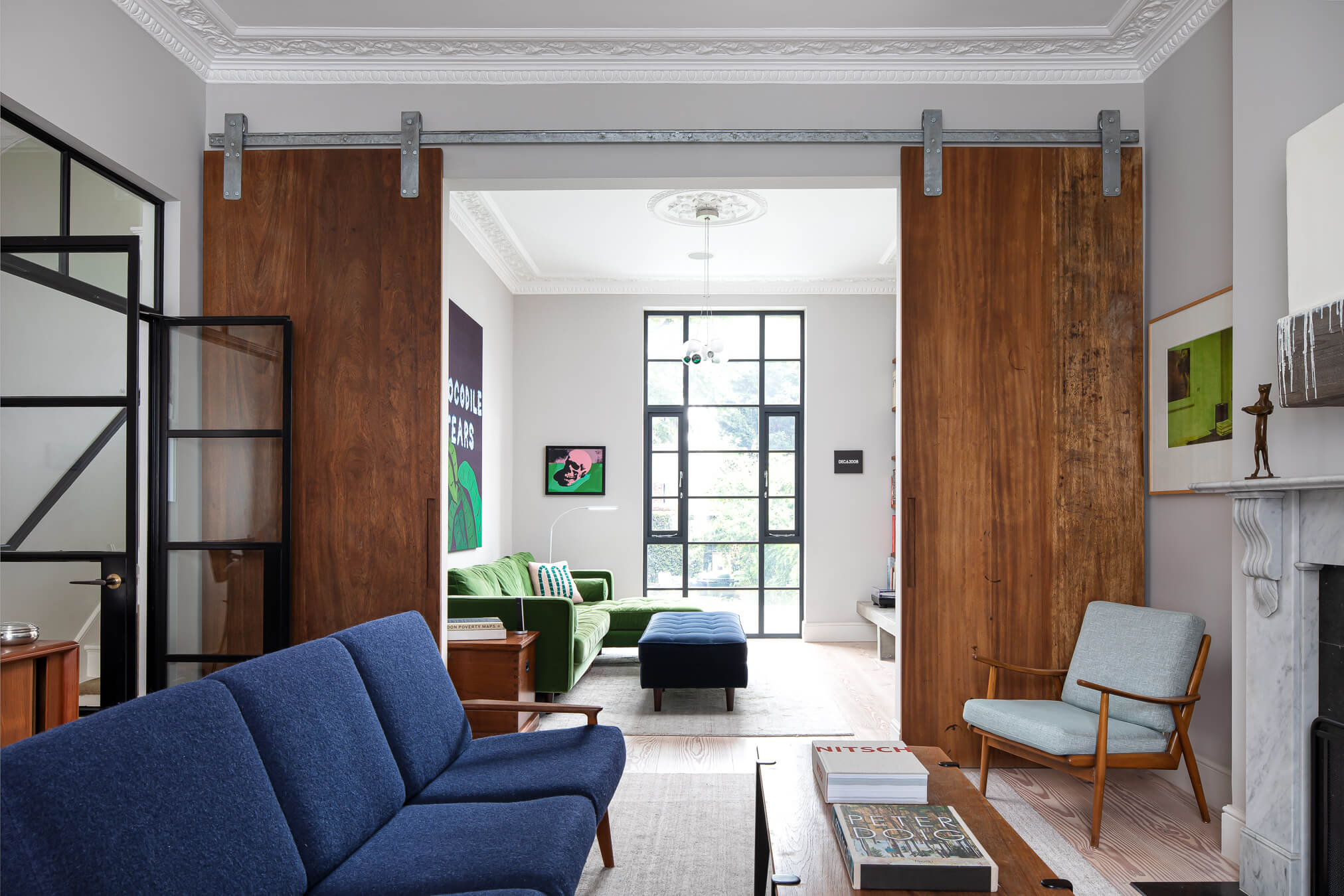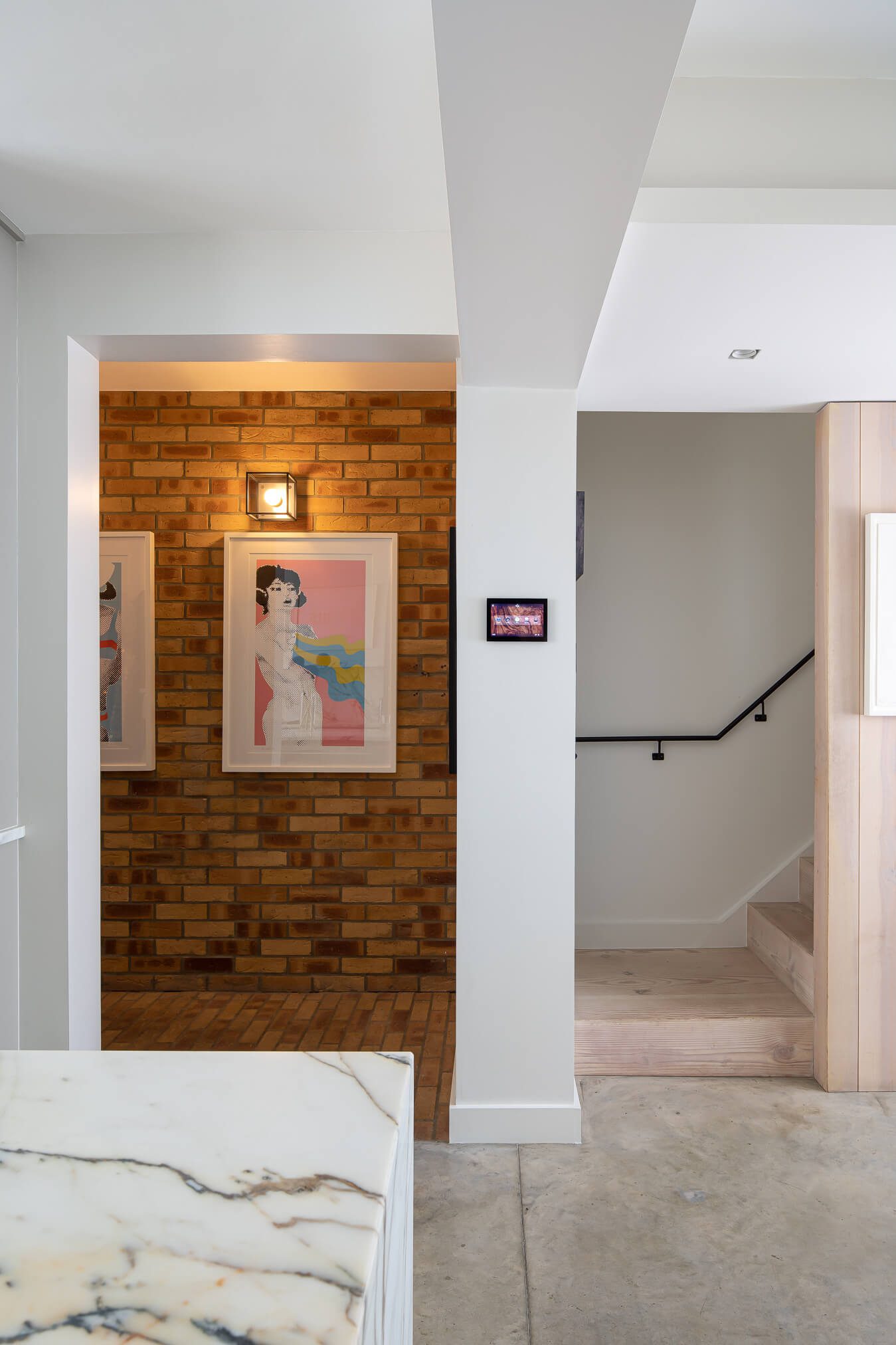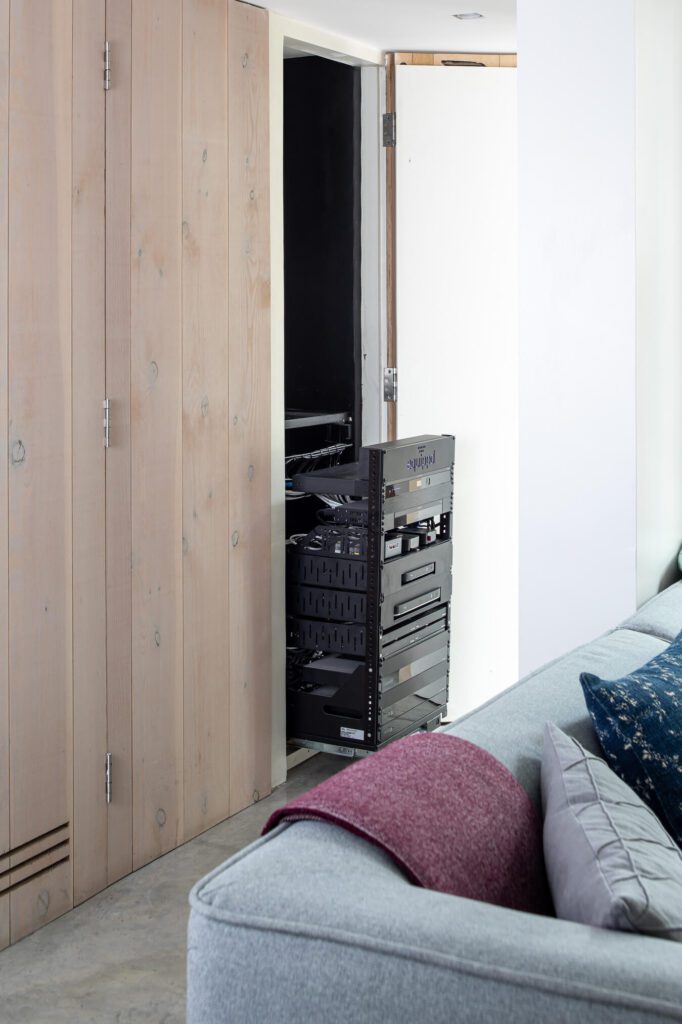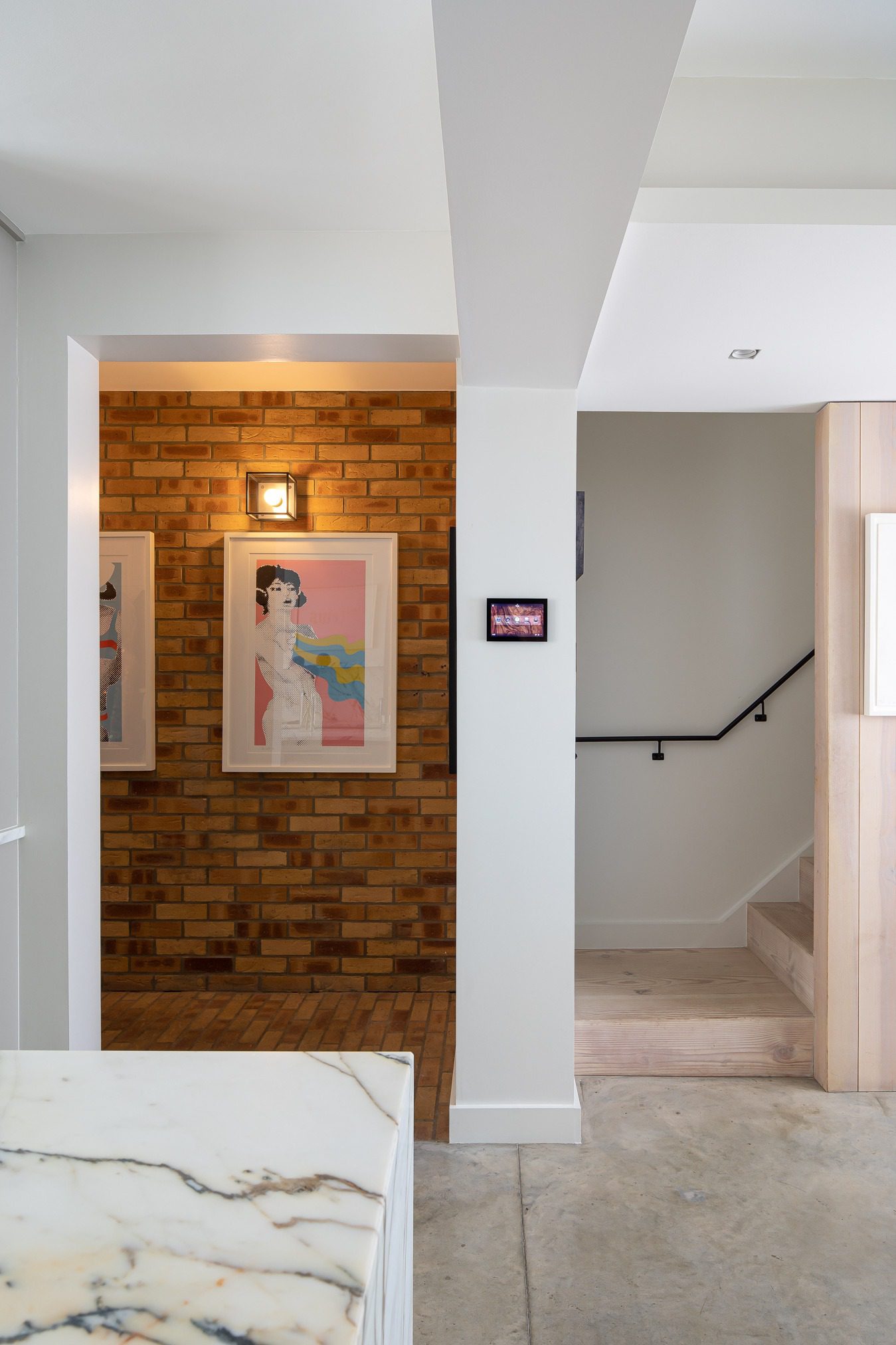Felicity Haythorn
Creating a smart home from scratch takes balls. For most homeowners, it can be a leap of faith – a deep dive into a mysterious world of cabling, connections and conundrums. Which control system do you go for? How much do you have to shell out up front? And will you have to replace or upgrade all the technology in a few years’ time?
But Quincy Kresler and her husband, Lock, did the math. They knew they wanted to turn their Victorian terraced townhouse in Clapham Old Town into a connected home.Equippd came on board to take that headache away. The team created a modern home that not only works in harmony with the Kreslers and their children’s lifestyle, but is also future proofed and hassle free for years to come.

Like any major refurbishment, planning is key. Where many homeowners go wrong, however, is neglecting to factor in the technology before the build begins. Not so Quincy. ‘We scoped the whole process out last July [2020],’ she explains. ‘We wanted to optimise WiFi throughout and not have to rely on telephone line boosters or all this other stuff. We knew from day one that if we were going to repair one light switch, we might as well do everything. So [Equippd] tested every single electric connection and every single data connection and rebuilt it from scratch.’
This foresight came in very handy when the Covid-19 pandemic hit and the UK was plunged into its first lockdown in March 2020. ‘The end result was that, you know, thankfully, going into lockdown, we sort of always knew that comm activity wasn’t gonna be an issue,’ says Quincy. ‘Homeworking was a lot easier because of that. It was a real treat and we were super grateful.’
And if you’re replacing all the electricals, why stop there? It may be more economical in the short term to work on one system at a time, but when you factor in the decorating costs and time spent on subsequent projects, in the long term it makes more sense to have everything installed in one fell swoop.
‘It is so incredibly time consuming to optimise one system at a time,’ says Quincy. ‘We thought, OK, if we’re going to do electrics, we might as well do WiFi. And we might as well do heating. And we might as well do security.’


Planning ahead meant that not only did the refurbishment unfold with minimal delays, with all contractors on site collaborating together, but the home was future proofed.
‘I did not want to come back and change any of these things in two or three years’ time, which is why we spent a lot of time looking at the tech cupboard to make sure that if one piece of technology needed to be replaced, it could be without taking down the whole system with it,’ explains Quincy.
She agrees that it was a big commitment. ’It is a big upfront cost, but you have to consider maintenance or planned obsolescence as a big factor to defray against that cost. It’s the balance between cost and effectiveness,’ she continues. ‘Think about the carrying cost of your information technology at home on a compounding year-on-year basis. If we could take a lot of upfront costs earlier on, but then not have to do anything to the system for five or six years, I consider that a huge win. In essence, you save money because you haven’t had to replace any material.’
And this is why she sought expert help. ‘We are at this odd transitional point in technology where there are still a lot of options in the market and different ways to stitch your house together. A lot of people are trying to do it cheaper by buying out-of-the-box solutions from Amazon. [But] you use a technology company because they are the custodians of your system, and Equippd is probably the best for smart homes on the market.’
Equippd were also invaluable in advising Quincy on which technology systems would work best for her family, enabling her to pick and choose separate entertainment, heating, lighting and security brands. These were then tailored to the family’s requirements and all controlled by Control4, an incredibly powerful central ‘brain’ that is wonderfully simple and easy to use.
‘People now have these very connected homes, but are running many, many different platforms and pay for many, many different apps to do it,’ muses Quincy. ‘Every Google and Amazon is trying to do a smart home, all on one platform, and I just don’t think we are there yet. I don’t think there’s any astoundingly good market leader. But Control4 allows you to control multiple different kinds of app.
‘We were able to pick and choose the system that we liked the most to run, sourced from Equippd’s recommendations: Heatmiser for the heating, Nest for the security, Sonos for the sound. This allows for a little bit of flexibility. Control4 aggregates it all together into one control unit. It’s a bolt-on system.’
The beauty of a connected home for Quincy is that not only is it future proofed for the best part of a decade but it continues to adapt and evolve.
‘It does take a while to get used to these new things,’ she admits. ‘I mean, we’re used to old-school thermostats and that very tactile sense of controlling your system. And so what’s nice about the smart home is we’re still adapting to it and learning how to use it. We are discovering new functionality each day. The nice thing about all these apps is they are continually optimising then and changing them. So it continues to develop, which is nice.’
And what is Quincy’s favourite part of her smart home? ‘The Lutron system is awesome. That’s definitely my favourite. The fact that it syncs with Control4 but also is controlled by its own app is really nice. [It’s] the ability to sit in bed and turn off the whole house, room by room. I can make sure the girls’ hallway light is on but that everything else is off. You can create scenes, go away and the lights come on when you’re not home. It’s totally customisable, it works really, really well, it looks really elegant and we absolutely love it.
‘It is also really nice to not have to worry about if we want to listen to music or watch TV or dim the lighting. You know, we’re not scrambling to find “that remote”. The universal remote of systems is pretty great.’
Like most things in life, carving out some time to work out exactly what you want, plan ahead and crunch the numbers can pay dividends. The Kreslers did just that and were rewarded with a home that works with them, constantly improving and evolving to meet their needs – a true future home.
